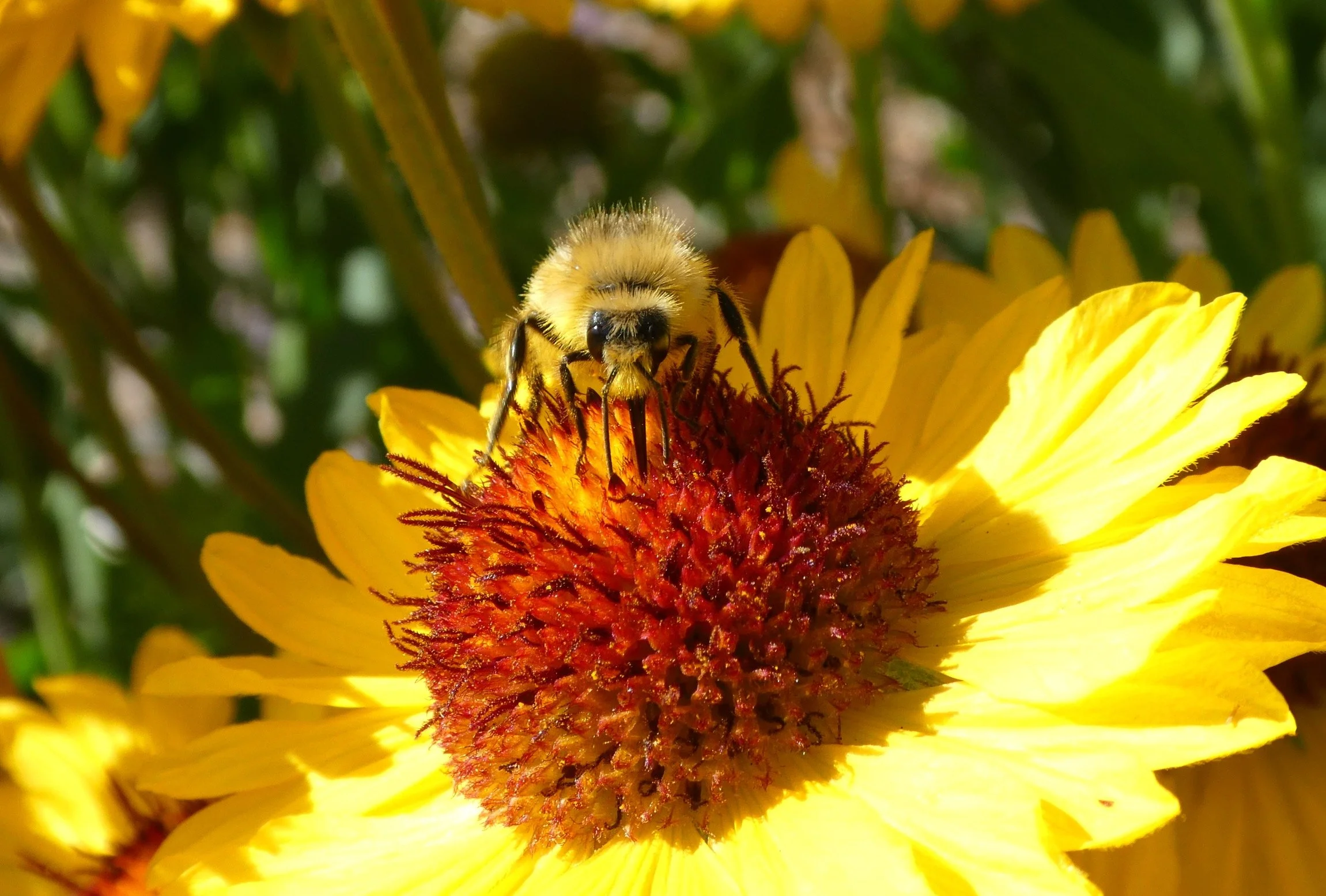Homes & Habitat Across the Region
/a bee on flowering goldenrod. There are over 600 species of native bees in Washington state! Credit: SCD Staff Kathryn Wells
If you’re an urban resident, it might be hard to believe you can still provide important habitat for wildlife. And if you live in a rural area, the thought of adding plants when you’re surrounded by forest may feel redundant.
This is the mindset Snohomish Conservation District is trying to change with our Homes and Habitat program. While the groundwork for this program launched in 2023, the heart behind it–inviting native plants into every space–has infused our work for decades.
“Anywhere there are native plants, there is habitat,” said Sara Rocero, District Habitat Restoration Project Manager. “Whether it’s multiple acres or someone’s balcony, this is a program where people can find resources to support any kind of space.”
Sara is an advocate for wildlife and regularly leads nature walks and habitat workshops for the District. Last spring, she co-presented with Monica Van der Vieren of King County Wastewater Treatment for a Landscaping with Wildlife workshop. The workshop encouraged participants to consider planting habitat for native wildlife when landscaping their properties.
Sara’s passion for backyard habitat has also inspired a guide on using multi-layered habitat–including trees, shrubs, groundcover, nurse logs, bird shelter, and other natural features–to attract wildlife.
"My hope with the Homes and Habitat program is that when you think about adding plants to a patio or yard, you consider native plants,” said Sara. “A huge bonus is that you can observe a rufous hummingbird or local butterfly that uses that plant for resources!"
One of the most exciting projects born out of the Homes and Habitat program is a partnership with local landscape architect and citizen scientist Peg Ferm. Peg has over 30 years of experience in local ecology and has observed native bees on her property for years. Washington has several hundred native bee species and they all help pollinate our farms, orchards, and native plants.
“Most pollinator plant information online does not match what I see around here, so six years ago I began to keep records,” Peg said. “I’ve recorded weekly which plants are attracting bees and noted if the bees were native or non-native honeybees.”
An illustration of diverse under canopy plants created as part of a guide to backyard habitat. Created by SCD Lead Designer Emma Kilgore.
Using data from her observations and experience as a landscape architect, Peg compiled lists of native and non-invasive plant species that support native pollinators. She also created a garden guide on how to maintain a continuous bloom of flowers that will feed bees throughout the seasons. The District is using these guides to help inform our technical assistance for community members looking to increase habitat around their home.
“Many native bees are only active for a few weeks, but bumble bees forage all season. Keep the flowers coming!” said Peg.
The Homes and Habitat program is continuing to develop resources and classes to help residents build diverse habitats around their homes. Community members can purchase native plants at our Annual Plant Sale, and our staff are available to provide technical assistance to help Snohomish County and Camano Island meet the goals of their outdoor space.
“This program gives people agency to make an impact,” Sara says. “I hope it sparks a passion in others to see that the native plants they install provide habitat for local wildlife like birds, pollinators, and amphibians."




